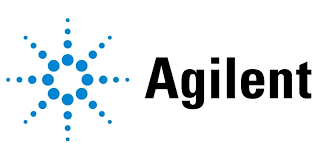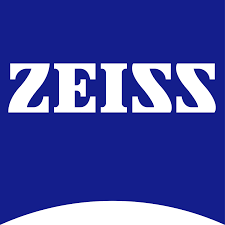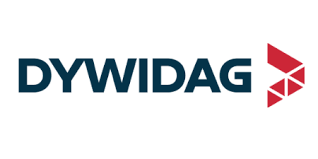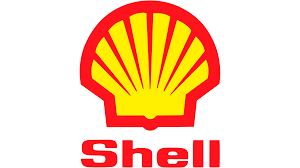Mass Spectrometry Market Report
Published Date: March 16, 2024 | Report Code: mass-spectrometry
Mass Spectrometry Market Size, Share, Industry Trends and Forecast to 2033
This report provides a comprehensive analysis of the Mass Spectrometry market, offering insights on market trends, size forecasts, and key players from 2023 to 2033.
| Metric | Value |
|---|---|
| Study Period | 2023 - 2033 |
| 2023 Market Size | $4.21 Billion |
| CAGR (2023-2033) | 7% |
| 2033 Market Size | $8.44 Billion |
| Top Companies | Thermo Fisher Scientific, Agilent Technologies, Waters Corporation, Bruker Corporation |
| Last Modified Date | 02 June 2025 |
Mass Spectrometry Market Report (2023 - 2033)
Mass Spectrometry Market Overview
Customize Mass Spectrometry Market Report market research report
- ✔ Get in-depth analysis of Mass Spectrometry market size, growth, and forecasts.
- ✔ Understand Mass Spectrometry's regional dynamics and industry-specific trends.
- ✔ Identify potential applications, end-user demand, and growth segments in Mass Spectrometry
What is the Market Size & CAGR of Mass Spectrometry market in 2023 and 2033?
Mass Spectrometry Industry Analysis
Mass Spectrometry Market Segmentation and Scope
Tell us your focus area and get a customized research report.
Mass Spectrometry Market Analysis Report by Region
Europe Mass Spectrometry Market Report:
Europe's Mass Spectrometry market is estimated to grow from 1.12 billion USD in 2023 to 2.24 billion USD by 2033. The presence of leading market players and stringent regulatory requirements in pharmaceuticals and environmental sectors drive investment in advanced mass spectrometry solutions.Asia Pacific Mass Spectrometry Market Report:
The Asia Pacific region is poised for substantial growth in the Mass Spectrometry market, with a current valuation of approximately 0.87 billion USD in 2023, projected to reach around 1.74 billion USD by 2033. Factors such as increasing R&D investments and growth in the biotechnology sector, particularly in countries like China and India, are driving this expansion.North America Mass Spectrometry Market Report:
North America represents the largest market for Mass Spectrometry, with a value of approximately 1.58 billion USD in 2023, anticipated to double to 3.17 billion USD by 2033. The region's advanced healthcare infrastructure, significant R&D activities, and increased adoption of mass spectrometric techniques in laboratories contribute to this robust growth.South America Mass Spectrometry Market Report:
In South America, the Mass Spectrometry market is expected to grow from 0.20 billion USD in 2023 to about 0.39 billion USD by 2033. The region's growth is fostered by rising healthcare expenditure and the need for improved analytical capabilities in food safety and environmental sectors.Middle East & Africa Mass Spectrometry Market Report:
The Middle East and Africa market for Mass Spectrometry is expected to expand from 0.44 billion USD in 2023 to 0.88 billion USD by 2033. Growing awareness of analytical solutions and investments in healthcare infrastructure are key factors supporting market progress in this region.Tell us your focus area and get a customized research report.
Mass Spectrometry Market Analysis By Instrumentation
Global Mass Spectrometry Market, By Instrumentation Market Analysis (2024 - 2033)
The Mass Spectrometry market is significantly influenced by various instrumentation types including Single Quadrupole, Triple Quadrupole, Time-of-Flight, and Ion Trap. Single Quadrupole Mass Spectrometers dominate the market with a size of approximately 2.46 billion USD in 2023, expected to reach 4.93 billion USD by 2033. The growth trends indicate a steady demand for these instruments in both research and clinical applications.
Mass Spectrometry Market Analysis By Technology
Global Mass Spectrometry Market, By Technology Market Analysis (2024 - 2033)
Technological advancements in Mass Spectrometry, particularly Electrospray Ionization (ESI) and Matrix-Assisted Laser Desorption/Ionization (MALDI), are redefining analytical capabilities. ESI currently holds a market size of 2.62 billion USD in 2023 and is projected to grow to 5.25 billion USD by 2033, illustrating its crucial role in sensitive biological analysis.
Mass Spectrometry Market Analysis By Application
Global Mass Spectrometry Market, By Application Market Analysis (2024 - 2033)
In terms of applications, the healthcare sector leads with a market size of 2.46 billion USD in 2023, expected to almost double to 4.93 billion USD by 2033. The pharmaceutical applications alone account for 42.45% of the market share, highlighting the necessity of mass spectrometry in drug development and quality assurance.
Mass Spectrometry Market Analysis By Enduser
Global Mass Spectrometry Market, By End-User Industry Market Analysis (2024 - 2033)
The end-user industry segment reveals strong usage in pharmaceuticals, healthcare, academia, and environmental sectors. With pharmaceuticals accounting for a market share of 42.45% in 2023, the demand for mass spectrometry in drug testing and development is evident. Additionally, academia is projected to increase its share notably, capitalizing on research funding and innovation.
Mass Spectrometry Market Trends and Future Forecast
Tell us your focus area and get a customized research report.
Global Market Leaders and Top Companies in Mass Spectrometry Industry
Thermo Fisher Scientific:
A leading provider of scientific instrumentation, Thermo Fisher integrates mass spectrometry technology into clinical and research applications, enhancing analytical capabilities.Agilent Technologies:
Known for its innovations in laboratory instruments, Agilent offers a comprehensive range of mass spectrometry solutions tailored for diverse analytical needs.Waters Corporation:
Waters is renowned for its high-performance liquid chromatography and mass spectrometry systems, driving advancements in pharmaceutical and environmental analysis.Bruker Corporation:
Bruker specializes in high-tech analytical instruments and solutions, actively contributing to mass spectrometry applications in various industries, including life sciences.We're grateful to work with incredible clients.









Related Industries
FAQs
What is the market size of mass Spectrometry?
The mass spectrometry market is valued at approximately $4.21 billion in 2023 and is projected to grow at a CAGR of 7%, reaching around $8.46 billion by 2033.
What are the key market players or companies in this mass Spectrometry industry?
Key players in the mass spectrometry market include Agilent Technologies, Thermo Fisher Scientific, Waters Corporation, PerkinElmer, and Hitachi High-Technologies Corporation, driving innovations and expanding their product offerings.
What are the primary factors driving the growth in the mass Spectrometry industry?
Growth in the mass spectrometry market is driven by advancements in analytical technology, increased adoption in pharmaceuticals for drug development, and rising demand for environmental analysis and quality control in various industries.
Which region is the fastest Growing in the mass Spectrometry?
North America is the fastest-growing region in the mass spectrometry market, expanding from $1.58 billion in 2023 to $3.17 billion by 2033, supported by robust healthcare and research sectors.
Does ConsaInsights provide customized market report data for the mass Spectrometry industry?
Yes, ConsaInsights offers customized market report data tailored to specific needs in the mass spectrometry industry, ensuring comprehensive insights into trends, opportunities, and competitive landscapes.
What deliverables can I expect from this mass Spectrometry market research project?
Deliverables from the mass spectrometry market research project include detailed market analysis, growth forecasts, competitive landscape insights, segment performance data, and strategic recommendations for stakeholders.
What are the market trends of mass Spectrometry?
Current trends in the mass spectrometry market include increasing integration with chromatography techniques, rising demand in clinical diagnostics, and advancements in miniaturization and automation technologies for efficient analysis.
